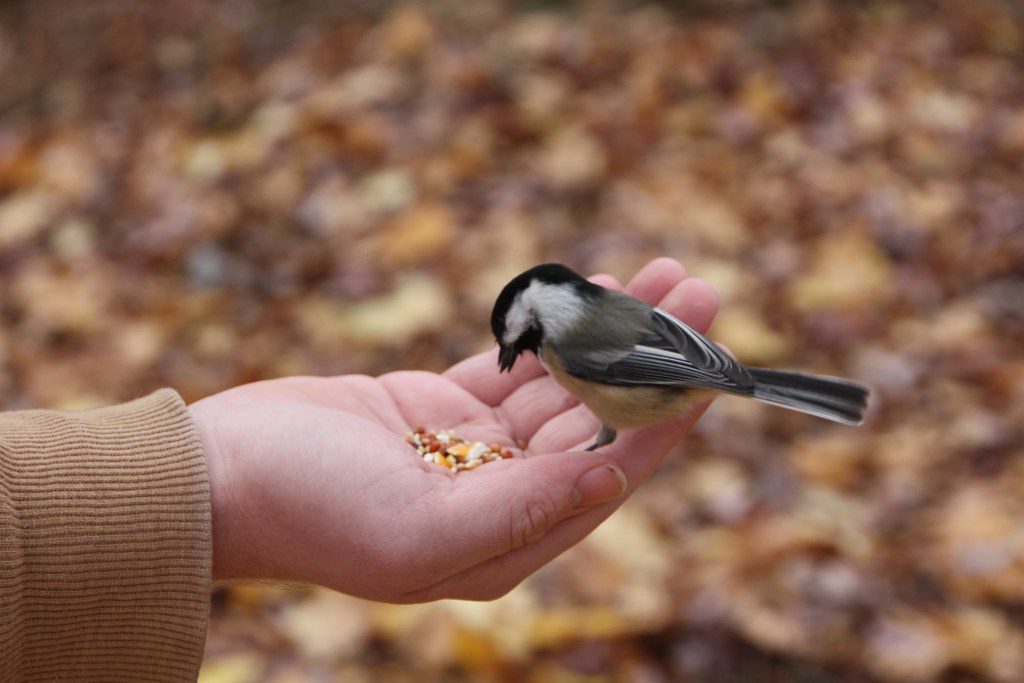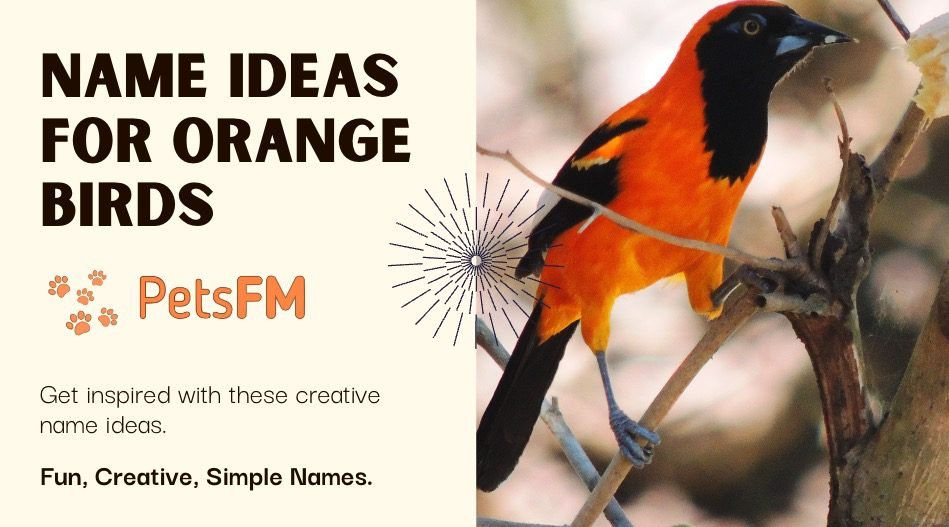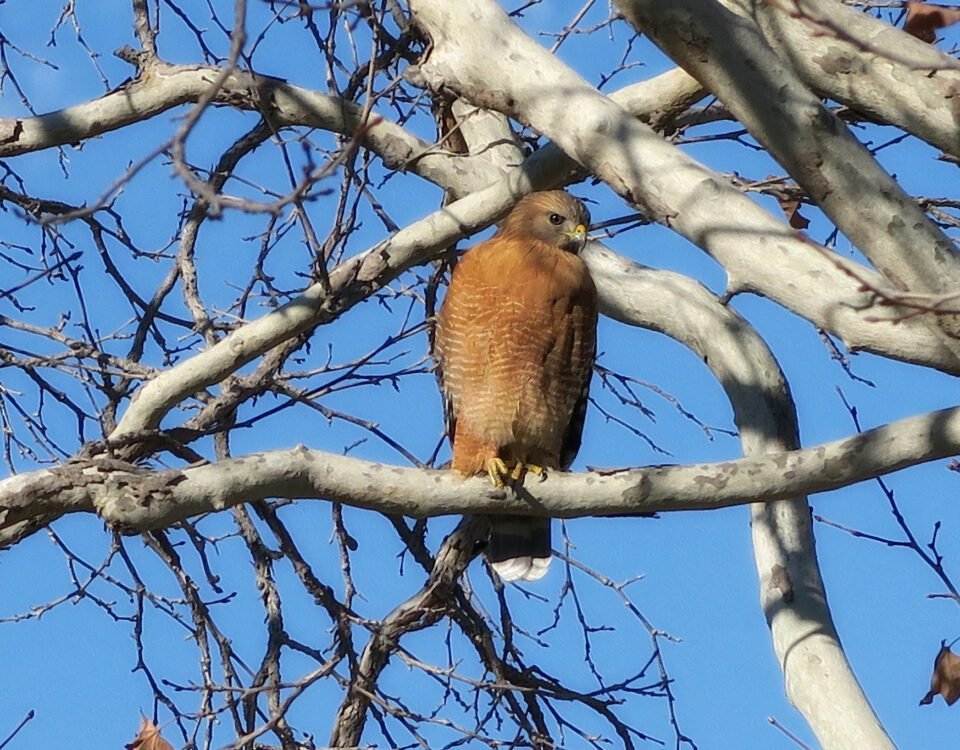


Why Do Hummingbirds Have Long Beaks? The Truth Discovered
October 10, 2023


Is It True That Birds Are Bad Luck? Myth Debunked
October 10, 2023If you’ve set up birdhouses in your yard, you’ve likely been astonished by the frequent visits from local birds and how swiftly they can deplete the food you offer. But have you ever noticed particularly obese birds, like an unusually big bullfinch or a chubby chickadee, that made you wonder if birds can get fat? Well, here’s a quick answer:
Surprisingly, birds can indeed become fat. Excessive seed consumption combined with limited flying or activity can lead to health issues for them.
Continue reading to learn how to ensure your feathered friends remain healthy and fit.
Also, Read: Are Birds Herbivores? A Look at Different Bird Species
How Do Birds Become Fat?
Obesity is one of the most common health issues among birds in captivity, often resulting from an inadequate diet dominated by seeds.
In their natural habitat, birds spend significant energy flying between trees, evading predators, and foraging for a diverse range of foods.


Fat Birds
However, in captivity, many birds have clipped wings, limiting their mobility primarily to walking or climbing. Coupled with a diet often rich in fats and lacking essential nutrients, this sedentary lifestyle reflects a person lounging on the sofa while indulging in unhealthy snacks like fries and cheesecake, thus becoming fat and lazy!
Must Read: Are Birds Omnivores? A Look at Different Species
What Causes Birds To Get Obese?
Birds getting fat is primarily caused by a combination of poor diet and lack of exercise. Like humans, when birds consume more calories than they burn, they gain weight. Here are some common reasons that cause obesity in pet birds:
Inadequate Diet
Many birds in captivity are primarily fed an all-seed diet, which can be high in fats and lack several essential nutrients. Seeds are beneficial in moderation, but when they make up the majority of a bird’s diet, it results in an imbalance.


For instance, birds primarily fed an all-seed diet often suffer from a deficiency in vitamin A (hypovitaminosis A). Additionally, seeds are typically low in calcium, resulting in weakened bones, fragile eggshells, and general fatigue in birds.
Hence, the birds might feel weak and tired and are more inclined to be inactive, which can consequently lead to weight gain.
Read if birds can have Watermelon.
Lack of Exercise
Birds in the wild cover vast distances, searching for food, mating, and evading predators. Their bodies are designed for such activities. Their movement can be severely restricted in captivity, mainly when wings are clipped.
A lack of adequate space to fly and move around leads to a sedentary lifestyle, promoting weight gain and affecting overall health and well-being.
Related Read: Why Won’t My Bird Play with Toys? The Unusual Truth
Health Issues
Underlying health problems can be a significant contributor to obesity in birds. Conditions like metabolic disorders, hormonal imbalances, and other diseases can influence how a bird processes and stores energy.
Overfeeding
Well-meaning bird owners can unintentionally overfeed their pets, especially with treats high in calories. Offering large portions or frequent snacks, even out of affection, can lead to rapid weight gain. It’s essential to understand a bird’s dietary needs and provide meals in appropriate amounts.


Environmental Factors
A bird’s immediate environment heavily impacts its health. Cages that are too small, lacking engaging toys, or missing perches can deter physical activity. Additionally, limited exposure to natural light can affect their circadian rhythms and metabolic rates.
Moreover, warmer climates can make birds less active, leading to a more sedentary lifestyle and contributing to weight gain.
Hormonal Changes
Like humans, birds can experience hormonal changes that affect their metabolism and appetite. Factors such as age, breeding cycles, and underlying health conditions can lead to hormonal imbalances.
These imbalances might increase food intake or decrease energy expenditure, promoting weight gain.
Editor’s Pick: Can Birds Eat Dates? (Which Species + How To Feed)
How To Tell If Your Bird Is Fat?
Excess weight in birds can lead to several health issues, some of which can be fatal. Here’s how you can determine if your bird is fat:


Overweight Bird
Assess the Breast Muscle
- The most reliable measure of your birds fat is examining its breast muscle positioned over the keel bone.
- A prominent bone along the bird’s centre, the keel, should be evident from the front.
- Adjacent to this bone, rounded muscles should be present.
- An overweight bird will exhibit a “cleavage” appearance, meaning the keel bone won’t stand out as the chest’s central feature.
- Conversely, underweight birds will have a concave feel next to the keel instead of the convex shape.
Check for Subcutaneous Fat
- Inspecting for fat beneath the skin is another method. Feathers have defined growth paths, leaving some areas bare.
- One such spot is along the neck’s side, starting from the jaw’s base.
- The jugular vein should be visible by parting the bird’s feathers in this region.
- If it’s difficult to locate or there’s a yellow hue under the skin, it indicates the presence of subcutaneous fat, suggesting your bird might be gaining excessive weight.
The Telltale Signs
- Several general signs might hint at obesity.
- If your bird seems exhausted after minimal activity, the additional weight might be the culprit.
- An unusually elongated beak might indicate fatty liver disease linked to obesity.
Regular Weighing
- Regularly weighing your bird on a gram scale is a straightforward approach to monitoring its weight.
- Additionally, during the bird’s annual vet check-up, the veterinarian should document its weight to track any significant fluctuations.
Obesity-Related Health Concerns In Birds
Common weight-related health issues in birds include:
Fatty Liver Disease
Fatty liver disease, or hepatic lipidosis, arises when excess fat cells surround the liver. This condition is primarily a result of diets overly rich in fats. Fortunately, the disease can often be reversed by transitioning the bird to a low-fat diet.
Lipomas
Lipomas are concentrated fat deposits that manifest as growths hanging off the body. Surrounding these growths, the skin is typically devoid of feathers. Once established, these lipomas usually require surgical removal.
Ulcerative Pododermatitis (Bumblefoot)
Bumblefoot is a condition where harmful bacteria infiltrate a bird’s body through cuts, abrasions, or scrapes on its feet. Obese birds are more susceptible due to the extra pressure their weight places on their feet.


Bumblefoot in Birds
Symptoms of bumblefoot include redness, scabs, ulcers, and swollen feet. This discomfort can lead birds to reduce their activity, further contributing to weight issues.
Atherosclerosis
Atherosclerosis involves the accumulation of fatty plaques within the walls of arteries, causing them to narrow and lose elasticity. This can increase the risk of cardiac events and strokes in birds, often leading to death.
Affected birds often nibble at their feet, a reaction to the discomfort this condition causes in their legs. Reduced blood flow from narrowed arteries can lead to lameness in the bird’s legs.
Xanthomatosis
In this condition, cholesterol crystals develop beneath the skin, leading to swelling at the tips of a bird’s wings, which, in extreme cases, may even bleed. Severe instances might require the amputation of the affected wing tips.
Recommended Reading: What To Do When Your Bird Bites You? A Complete Guide
How Can You Help Your Bird To Lose Weight?
Helping your bird maintain a healthy weight revolves around a balanced diet and consistent physical activity. Here are some steps to ensure your bird stays fit and healthy:
Dietary Adjustments:
-
- Adopt a well-balanced diet comprising pellets, vegetables, occasional beans, rice, and pasta with a minimal inclusion of fruit.
- Reserve high-fat seeds and nuts strictly as treats. Ideally, give only one or two seeds once or twice a week. Exceptionally, hyacinth macaws may have more.
- Ensure pellets are always available in the cage.
- Home-prepared foods should remain in the cage for 30 to 45 minutes.
Physical Activity:
-
- Utilize an outdoor flight cage if possible.
- Bird-proof your living space to allow safe indoor flying under supervision.
- Increase shower frequency; the associated preening and movement help burn calories.
Mental Stimulation and Activity:
-
- Regularly rotate toys in the cage to provide fresh stimulation.
- Be cautious with frequent toy changes, especially if your bird is skittish or prone to feather picking, as it can be counterproductive.
Conclusion
It’s essential to understand that lean birds lead longer and healthier lives. Before venturing on any significant weight loss plan for your bird, it’s crucial to consult with a veterinarian. If expert nutritional guidance is inaccessible, focusing solely on enhancing exercise rather than making abrupt changes to the diet is advisable.



